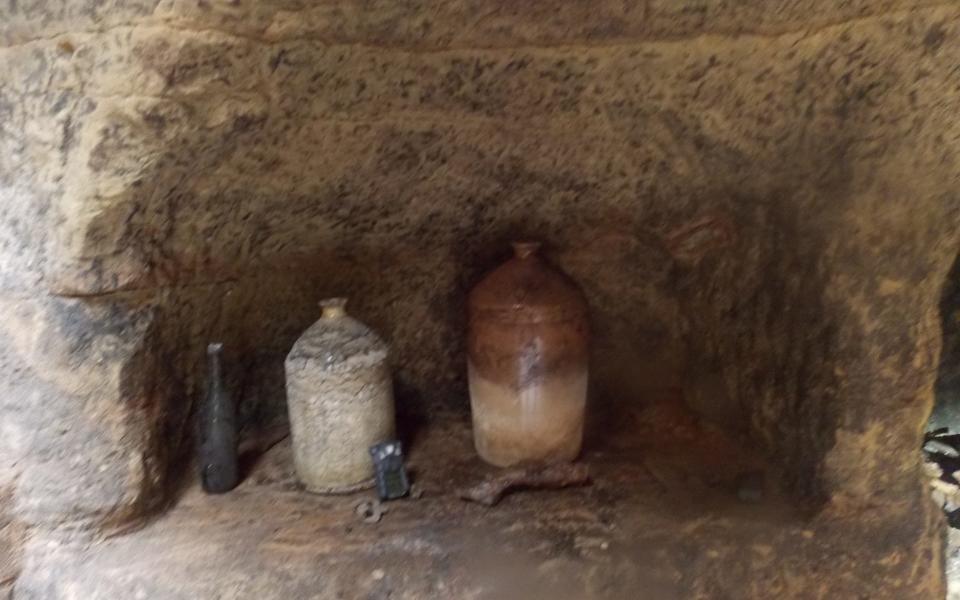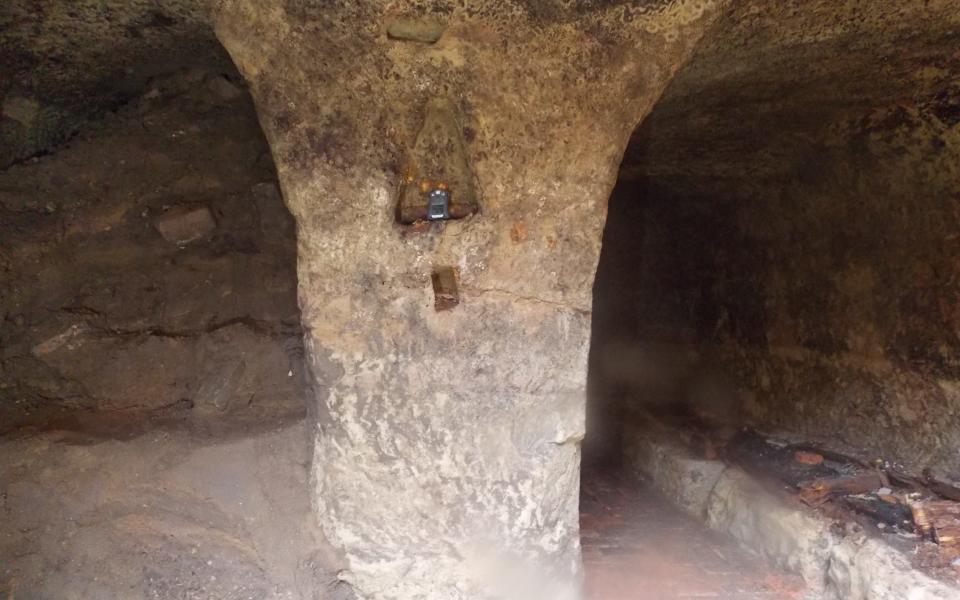Hundreds of undiscovered caves still remain below Nottingham's streets

Caves that have been discovered below buildings in Nottingham have revealed their Victorian inhabitants used them to brew beer and grow mushrooms.
Archaeologist Scott Lomax, who is researching the city's underground dwellings, said the man-made caves were a window into the lives of wealthy Victorians.
Mr Lomax, an archaeological adviser for Nottingham City Council, believes there may be "hundreds" more yet to be discovered below the city's streets.

He has spent years trawling through property records, believing the underground chambers hold clues to the city's lost buildings.
"Even if you have got a lot of buildings that have been destroyed above ground, you have got these remnants of the past below the surface," he said.
While some of their uses have never been fully understood, Mr Lomax said recent finds show one use was "growing mushrooms", adding "we now know [this] was quite a common use in the Victorian period".
Others were used for brewing beer and malt production, he discovered after going through 3,000 19th century auction records and documents to identify properties.

Since beginning his project to research and document the city's underground dwellings in 2008, Mr Lomax has located 180 caves - most of which were rediscovered in the last 12 months due to research and red.
The chambers are known to have been in use since 893 when a Welsh monk named Asser documented their existence, describing the city as the 'place of caves'.
But over recent discoveries have revealed the different use for the caves over the centuries, from prisons and food cellars to bomb shelters during the war.
Just last week Mr Lomax uncovered a 200-year-old cave below a barbershop in the city, which was likely to have been used to store medicine for a shop above it.
A number of others exist beneath pubs, or on the sites of former pubs, as their sandstone material helped maintain a consistently cool temperature all year round.
Other uses included transforming them into wine cellars, malt kilns, tanning, catacombs, passages, hermitages and ornate 'follies' during the Victorian period, said Mr Lomax.
The archaeologist said the research "shows all the uses caves have had over the centuries" adding it was "crucial that we do really protect and better understand those caves".

